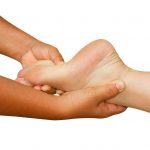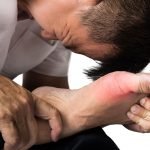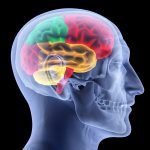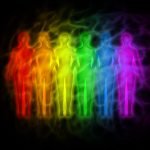Childhood Trauma and Adult Disease: What’s the Real Diagnosis?
Paul Epstein, ND
“Traumatic events of the earliest years of infancy and childhood are not lost but, like a child’s footprints in wet cement, are often preserved life-long. Time does not heal the wounds that occur in those earliest years; time conceals them. They are not lost; they are embodied .”
(Felitti VJ)1
Early childhood trauma, often the product of growing up in a dysfunctional family system, is the predominant factor for many of the lifestyle issues and chronic illness we as naturopaths see day in and day out. Our naturopathic philosophical principles guide us to emphasize the whole person and the underlying cause of disease, exploring the where, when, how and why—to heal and transform at the deepest developmental level. It doesn’t get any deeper than the ties we form with our family. Childhood experiences underlie every aspect of self-expression as adults—from quirks to chronic disease. Chronic disease develops from the embodied wounds and “legitimate suffering” we carry from childhood.
The above quote by Felliti, from the book, The Impact of Early Life Trauma on Health and Disease: The Hidden Epidemic1 beckons us to spend more time and resources unlocking the hidden aspects within. This monumental work describes with scientific data the biophysiological effects of psychological trauma and provides evidence from epidemiological, biological, psychological, and clinical data from the fields of neuroscience that early-life trauma has long-lasting and profoundly deleterious effects on the physical, mental, and emotional health of children and adults across their life span. This text validates and confirms many of the therapeutic principles and clinical perspectives that I, as a naturopathic physician practicing mind-body medicine, have been championing for nearly 30 years: that the dysfunctional family system, resulting oftentimes in abuse, abandonment, neglect/enmeshment, with varying physical, sexual or psychological components, lies at the root of a vast majority of chronic disease states, including autoimmune, pain, and nervous system disorders.
As a child, the only choice available is to simply survive an experience, to contain the pain and suffering so that life may continue with normality. Healing is a process of developing new relationships to those experiences, learning how to release from the past somatic inscription of childhood trauma.
In the book, Scared Sick: The Role of Childhood Trauma in Adult Disease,2 the authors, Robin Karr-Morse and Meredith S. Widely, present the evidence and state the case that chronic fear experienced in infancy and early childhood lies at the root of chronic diseases as well as contributing to emotional and behavioral pathologies. They explain how early fear triggers disease by dysregulating the HPA axis, activating the vagus nerve, and catalyzing epigenetic mechanisms that facilitate the expression of genetic disease. Disease states may originate from the early conditioning of our bodies, minds and hearts, in our natural efforts aimed at surviving the story of what happened to us. Our innate protective mechanism…our fight/flight system…is overworked in childhood and later becomes the cause of chronic disease. The chemistry of fear quietly takes its toll on our organs and regulatory systems throughout our development. They state:
“No longer sidelining the story to the domain of metaphysics, medical researchers across the world are unveiling in biological terms how it is that our experiences effect our biology, particularly when these experiences are chronic, happen early in life, and remain unrecognized….We live permanently in the recurrence of our own stories, whatever story we tell…Whatever your history, there is much we can do to change these outcomes and to intervene—even in our last decades—in our emotional and physical health, as well as our children’s.”
There has been renewed interest and investigation of the 1995-1997 Adverse Childhood Experiences (ACE) study, the largest investigation of early childhood trauma’s connection to health and well-being, conducted by the Centers for Disease Control Prevention and Kaiser Permanente’s Health Appraisal Clinic in San Diego.3
This study addressed factors such as verbal, physical, and sexual abuse, family dysfunction (eg, an incarcerated, mentally ill, or substance-abusing family member; domestic violence; or absence of a parent because of divorce or separation). These adverse childhood experiences (ACEs) were shown to correlate significantly to a range of adverse health outcomes in adulthood, including substance abuse, depression, cardiovascular disease, diabetes, cancer, and premature mortality. In fact, the conclusion made by the study was that: “Adverse Childhood Experiences are the most basic cause of health risk behaviors, morbidity, disability, mortality and health care costs,” and thus can be seen as predictors for the development of chronic disease later in life.4
With the surfacing of this type of evidence, as naturopathic physicians we must ask ourselves two primary questions.
What’s the Real Diagnosis?
The current standards of diagnostics lead us to paint an overtly physical picture for our patient of what is often covertly emotional or psychological. If these hidden factors, such as childhood trauma, are such crucial pieces of the disease process, why are they taking a backseat to a more superficial diagnostic model? Despite the specific
ICD-9 code which must be billed, it is a legitimate question to ask whether traumatic life events could be influencing the symptom picture—the answer is nearly always yes.
This is the living question of “how did they come to be this way?”
Do people have “arthritis,” or do they have repressed grief from childhood? Do people have “irritable bowel syndrome,” or do they have anger and frustration from growing up in an alcoholic home? Do people have “fibromyalgia,” or were they abandoned and neglected as children? Do people have weight issues because of their metabolism, or were they abused sexually? Can autoimmune diseases, migraines, chronic pain, adrenal fatigue, and metabolic syndrome all be seen in light of surviving adverse childhood events? Balancing the immune system and biochemical pathways, though important, may not be addressing the underlying factors which cause many of these chronic ailments. Are corrections we make to functional imbalances truly correcting the cause, or are they perhaps bypassing a larger issue? Certain diagnostic norms may entice us to treat the cell biology, thereby ignoring self biography.
To exemplify the need to look beyond the diagnosis I recall the case of Maggie, a 38-year-old female struggling with a lifelong effort to lose weight and the cycle of yoyo dieting.
I have been seeing patients for 29 years and encouraging them to let go of their addiction to dieting, while at the same time maintaining their positive intention and desire to lose weight. The weight is hardly ever the real issue. Weight and fat are symptoms of deeper issues asking to be listened to, serving a purpose, and asking for healing. I guide my patients to see weight with new eyes, to look deeper and explore its meaning. To look past the diagnosis of obesity and ask, “What happened? How did I come to be this way?”
The first thing I asked Maggie as she sat in my office was, “Why do you want to lose weight?” She answered,
“Because I am fat and ugly and I hate myself. And my doctor told me I had to lose weight to help treat my high blood pressure and diabetes. I have been trying to get rid of this fat for 20 years. It comes and goes, I lose it, but it returns and here it is again; it’s back. I’ve been on numerous diet programs and now I’m fat again, fatter than ever.”
This is not an abnormal response to this question. Maggie’s self esteem and her relationship to herself and her weight were at rock-bottom from numerous failed attempts to lose and keep weight off. She couldn’t stand herself and wanted to lose weight again, as soon as possible. But if I were to simply regard her hypertension and diabetes as reasons to give her another diet, I’d be agreeing with her. “Yes,” I would be saying, “you are fat and ugly and you need to lose weight to feel good about yourself.”
Was hating herself about her weight, or was her weight a symptom? What came first—the chicken or the egg, the weight or self-hatred? Engaging her in a program to lose weight would only serve to reinforce self-hatred and support her diet compulsion. Einstein once said that “you can’t solve a problem with the same consciousness that created it.” I could have focused on her metabolism, hormones, food allergies, digestion, metabolic syndrome, diet and nutrition, and blood type, and corrected all of her functional medicine test imbalances and abnormal findings. However, other doctors and specialists had already done this. The lifestyle wasn’t the problem.
I suggested to Maggie, who was so anxious to lose weight, that when she could say “I want to lose weight because I love myself,” I would be happy to support her with all the necessary clinical interventions. I also asked her if she was willing to look inside and listen to the symptom of her fat and what it was about, why it was there, and any message it had for her. She agreed.
I used the therapeutic tool of clinical guided imagery and the process of listening to the symptom. I began the process by guiding Maggie into a deep trance using breath awareness and progressive relaxation. Once I was sure she was relaxed, I then asked her, “In your imagination, go to a special place of peace, safety and serenity.” Once there, I suggested, “Let an image form that represents your issue, your symptom, the fat, the weight.” Allowing images to form spontaneously, whether it makes sense or not, is extremely powerful; you never know what arises from the subconscious.
After being given the time and space she needed to reflect on this suggestion and instruction, Maggie shared that she had received an image of a “down comforter.” I could sense something shift deep within her as she recounted the image, as if a light bulb were switched on. An “ah-ha” moment as her facial expression changed, lying on the table. An insight that would change her consciousness about her weight and losing it. She had realized that like a down comforter, her weight was “warming, protecting, buffering, cushioning; “keeping me safe,” she explained. It was now her friend, a friend that was supporting and serving her, not an enemy to hate and get rid of!
I recall it being a very profound moment for me as well, as a new physician learning to trust the process and the technique of asking people to look deep within, to look for healing, to live the questions and listen for the message within symptoms.
The next obvious question was to ask what was being protected; what had happened to warrant the need for a comforter? We then began a dialogue with the down comforter asking it questions to find out all about it and begin a new relationship, to see it with new eyes, to be with it in a new way.
As she continued to listen with the ears of her heart she learned more about what happened in her biography that led to this biology. She became aware of her childhood trauma, what happened to her and how it was still living within her, manifesting as a biomedical diagnosis of obesity, diabetes, high blood pressure, back pain. She had been sexually abused as a child and had buried the trauma deep within and protected herself from it with a down comforter of fat. She learned that there was a vulnerable wound underneath the fat that she was protecting, which needed love and embracing. She had choices and resources now that weren’t available before, that she could use for healing and unburdening the past. She had survived; now she could heal and live.
For many, Maggie and other people eating and being overweight is a solution to their problem, as much as another part of them hates it and tries to stop it and get rid of it. Eating soothes their anxiety, fear, anger, shame, and depression. It’s the mood-altering function of all addictions and compulsions, whether substance or activity, such as being a workaholic, sexaholic, or perfectionist. Not overeating, and not being fat and overweight, increased her anxiety, fear and depression to intolerable levels; she was unsafe. Being obese solved her problem, but also produced a secondary gain of symptoms and disease. Being obese protected her.
“To the degree that we do not figure out how to integrate this knowledge into everyday clinical practice, we contribute to the problem by authenticating as biomedical disease that which is actually the somatic inscription of life experience on the human body and brain.” (Felitti VJ )4
How to Connect With Another’s Trauma
The second question which the ACE study calls forth is this: How do we integrate this information into clinical practice? How do we connect with patients at this level? One important first step we can take in learning how to connect with this trauma is to explore, acknowledge and face our own painful truths. To know our own story, our own biography, and to see ourselves as wounded healers, allows us to enter the healing relationship with far more empathy than otherwise possible, as well as the experience of the process, which will be necessary to facilitate on some level with patients who have yet to unlock their own hidden doors.
Traumatized and wounded patients need a safe place and a safe relationship to explore what happened and look inside. The healing of childhood trauma requires a healing presence, requires a connection with the clinician and with themselves, a secure attachment to feel safe to face their truth. We as physicians are understanding more and more about the healing relationship and the importance of being a healing presence. This is especially true in working with people with childhood trauma and adverse childhood experiences. Under the pain and fear is a part of us that feels helpless and desires love, and as we learn to be there with ourselves and our wounds, we have the resources to be there for our patients—to guide them and to bring love, compassion, and a healing presence to their wounds.
I have come to understand that learning to be with my own painful truth, to acknowledge it and to give it space, is not only important for my own healing, but critical to supporting others as well. As Carl Jung stated, “The doctor is effective only when he himself is affected. Only the wounded physician heals.”5
Recommended Books for Working With Childhood Trauma
- Impact of Early Life Trauma on Health and Disease: The Hidden Epidemic, by Ruth A. Lanius, MD
- Scared Sick: The Role of Childhood Trauma
in Adult Disease, by Robin Karr-Morse - Adult Children of Alcoholics Syndrome:
A Step by Step Guide to Discovery and Recovery, by Wayne Kritsberg - When the Body Says No: Exploring the
Stress-Disease Connection, by Gabor Maté - Mind as Healer, Mind as Slayer,
by Kenneth R. Pelletier - Healing the Child Within: Discovery and Recovery for Adult Children of Dysfunctional Families,
by Charles L. Whitfield, MD - Healing the Shame that Binds You,
by John Bradshaw - Radical Acceptance: Embracing Your Life
With the Heart of a Buddha, by Tara Brach, PhD - Invisible Heroes: Survivors of Trauma and
How They Heal, by Belleruth Naparstek - The Body Remembers: The Psychophysiology
of Trauma and Trauma Treatment,
by Babette Rothschild - Waking the Tiger: Healing Trauma: The Innate Capacity to Transform Overwhelming Experiences, by Peter A. Levine
- 8 Keys to Safe Trauma Recovery:
Take-Charge Strategies to Empower Your Healing,
by Babette Rothschild - The Trauma Spectrum: Hidden Wounds
and Human Resiliency, by Robert Scaer - The Invisible Wound: A New Approach to Healing Childhood Sexual Abuse, by Wayne Kritsberg
- The Courage to Heal: A Guide for Women Survivors of Child Sexual Abuse, by Ellen Bass
Recommended Podcast:
Safe Space Radio has posted a new podcast: Child Abuse and Physical Health 25 years Later, which may be accessed at: http://safespaceradio.com/2013/04/child-abuse-and-physical-health-25-years-later/. This is an interview with Dr. Vincent Felitti about his research showing correlations between adverse childhood experiences and both mental and physical illness.
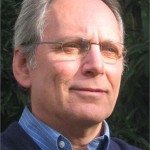
Dr Paul Epstein ND
Paul Epstein, ND is a mind-body therapist, mindfulness meditation teacher, speaker, workshop leader, and author. He graduated from NCNM in 1984, where he also directed the clinical lifestyle change program “Healthstyles.” He has successfully advocated and integrated the clinical application of mind-body medicine, mindful awareness and contemplative body-centered psychotherapy for 30 years. Paul co-founded the Israel Center for Mind-Body Medicine. He graduated from the Academy for Guided Imagery, completed the 3-year training program for Community Dharma Meditation Leaders at the Spirit Rock Meditation Center, and has trained in the “Internal Family Systems” model of psychotherapy. He practices in Westport, CT, where he was also founded the Insight Meditation Community of Fairfield County. Dr. Epstein has taught mindful healing workshops worldwide, has lectured at numerous annual conferences, and has taught courses, continuing education programs and electives at NCNM, Bastyr University, CCNM, OAND and UB. He mentors healthcare professionals to integrate mindfulness and mind-body therapy. He will be conducting a CCNM online training course in the fall of 2013. He is author of the book, Happiness Through Meditation, and has several other articles available. A sequel to the above article will be featured in the near future. Website: www.drpaulepstein.com; email: [email protected]; phone: 203-722-2358.
References
- Lanius RA, Vermetten E, Pain C, eds. The Impact of Early Life Trauma on Health and Disease: The Hidden Epidemic. Cambridge, England: Cambridge University Press; 2010.
- Karr-Morse R, Wiley MS. Scared Sick: The Role of Childhood Trauma in Adult Disease. Boulder, CO: Basic Books; 2012.
- Centers for Disease Control and Prevention. Adverse Childhood Experiences (ACE) Study. http://www.cdc.gov/ace/. Accessed October 18, 2013.
- Felitti VJ, Anda RF, Nordenberg D, et al. Relationship of childhood abuse and household dysfunction to many of the leading causes of death in adults. The Adverse Childhood Experiences (ACE) Study. Am J Prev Med. 1998; 14(4):245-258.
- Dunne C. Carl Jung: Wounded Healer of the Soul. Sandpoint, ID: Morning Light Press; 2000.





